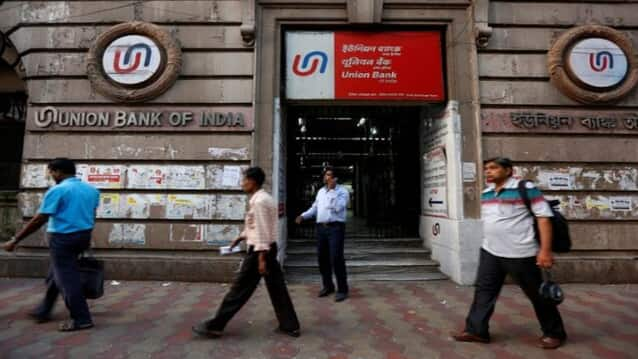The brokerage has retained its “Buy” rating on the stock, with a 12-month target price of Rs 168, valuing it at 0.9 times FY27 estimated adjusted book value.

The bank, on Saturday, had reported a 12 per cent year-on-year (y-o-y) rise in net profit to Rs 4,116 crore during the first quarter of FY26 (Source: reuters)
Union Bank of India is expected to deliver a sustainable return on equity (RoE) of around 14 per cent over the medium term, driven by improving asset quality, a stable operating profile, and healthy traction in retail and MSME lending, despite pressure on profitability in the June quarter, according to a research note by Anand Rathi on Monday.
The brokerage has retained its “Buy” rating on the stock, with a 12-month target price of Rs 168, valuing it at 0.9 times FY27 estimated adjusted book value.
The bank, on Saturday, had reported a 12 per cent year-on-year (y-o-y) rise in net profit to Rs 4,116 crore during the first quarter of FY26, driven by lower provisioning, from Rs 3,679 crore during the same quarter in FY25.
Also read: IBA Urges Banks to Begin ISO 20022 Migration by August to Avoid Payment Failures
The net interest income (NII), however, had dropped by 3 per cent in Q1FY26 to Rs 9,113 crore, compared to the same period last year. The net interest margin (NIM) for the quarter declined to 2.76 per cent, down 29 basis points (bps) from 3.05 per cent in Q1FY25.
While the bank reported a decline in operating profit in Q1 FY26—led by lower margins and weaker non-interest income—its cost-to-income (C/I) ratio remained under 50 per cent, signaling underlying efficiency. RoE, meanwhile, remained above 15 per cent for the 10th consecutive quarter, a trend the brokerage expects to stabilize around 14 per cent going forward.
The report highlighted that, despite near-term pressures, cost efficiency, asset quality, and steady loan growth are likely to support medium-term earnings.
Asset quality showed further improvement with slippages declining to Rs 23.5 crore, or 1 per cent of loans, which was lower than both the previous quarter and internal estimates. The special mention account (SMA) portfolio stood at 0.5 per cent of loans, while the standard restructured book fell to 0.9 per cent.
With most legacy stress already recognized and a low forward-looking stress pipeline, slippages are projected to remain below 1.5 per cent in the medium term, with gross NPAs expected to trend downward.
Also read: Resilience Through Innovation: How BFSI Is Reinventing Itself for Future
Moreover, retail and MSME books grew 5.7 per cent and 5.9 per cent quarter-on-quarter, respectively, helping total advances reach Rs 9.5 lakh crore, up 7.7 per cent year-on-year.
The report noted that the credit growth of the bank is expected to broadly track overall system growth, supported by adequate capital and a strong deposit base.
Anand Rathi projects return on assets (RoA) for Union Bank of India of about 1.1 per cent through FY26–27, aided by treasury gains from falling bond yields, recoveries from written-off accounts, and credit costs below 1 per cent.
Key risks include lumpy slippages in the corporate loan portfolio and slower-than-expected credit growth.
By continuing you agree to our Privacy Policy & Terms & Conditions
